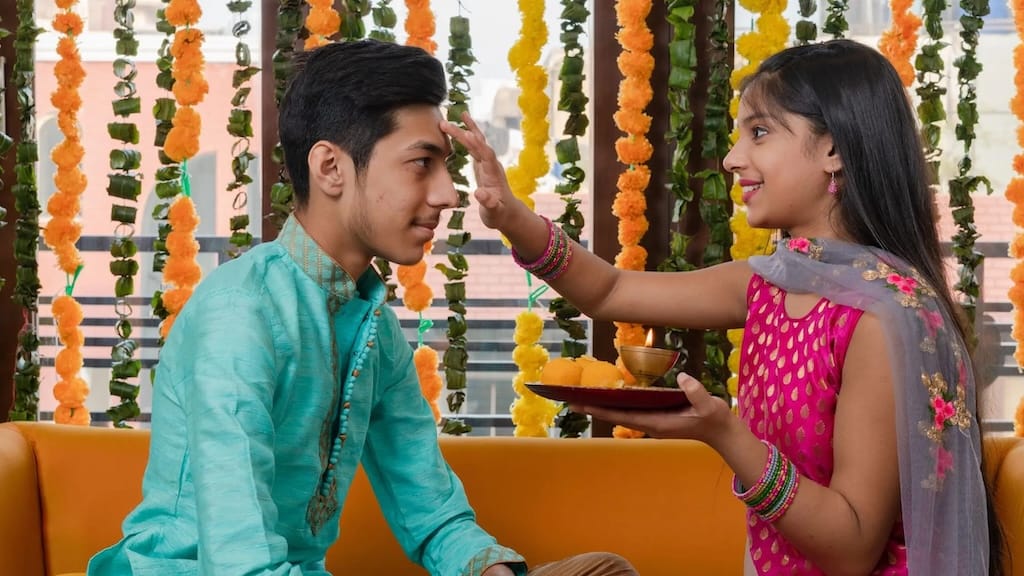
Tihar: The Festival of Lights in Nepal
Tihar, also known as Deepawali, is one of the most vital and colorful festivals celebrated in Nepal. This five-day Hindu festival, also known as the festival of lights, holds great cultural and religious significance.
It is devoted to the worship of different gods, animals, and the relationship between brothers and sisters, thus making it a festival that perfectly blends spirituality, nature, and family love. The whole country is aglow with thousands of oil lamps, candles, and colorful decorations, creating an enchanting atmosphere that captivates both locals and visitors alike.
Historical Background
The origins of Tihar are deeply rooted in ancient Hindu mythology and traditions. The festival is believed to have started several centuries ago and gradually evolved, incorporating many regional traditions and customs within its fold. One of the significant deities mainly associated with Tihar is the goddess Laxmi, who is the goddess of wealth and prosperity.
According to myth, she visits every home that is clean and well-lighted, leaving behind a lot of prosperity for the next year. Another major part of Tihar is the worship of animals, especially crows, dogs, and cows, each of which has a day of the festival dedicated to them.


Over the years, there have been quite a few milestones for Tihar, such as the introduction of modern decorative lights and fireworks. Despite these changes, Tihar has still maintained its traditional essence and is alive in Nepalese culture.
Typical Activities
The five days of Tihar are filled with activities that strengthen social bonding. Each of the days has its unique significance and rituals:
- 🐦⬛ Kag Tihar (Day of the Crow): On the first day, crows are worshipped and fed with offerings; it symbolizes the messenger of death.
- 🐕 Kukur Tihar (Day of the Dog): The second day is reserved for showing respect to dogs, which are believed to be the protectors of the home. Dogs are decorated with flower garlands and tika (a red mark on the forehead) and are given tasty food.
- Gai Tihar and Laxmi Puja: The third day begins early in the morning with the worship of cows. They are considered sacred and a symbol of wealth. In the evening, people perform Laxmi Puja by lighting oil lamps and candles to invite Goddess Laxmi into their homes.
- Govardhan Puja: The fourth day is dedicated to the worship of oxen and enacting the legend of Lord Krishna holding up the Govardhan Hill.
- Bhai Tika: The last day is for the brother-sister relationship. Sisters apply tika on their brothers' foreheads, do rituals, and pray for their long life and prosperity.
Traditional Customs
Tihar is replete with traditional customs and practices that showcase the cultural diversity of Nepal. The festive time is a feast to the senses: colorful, melodious, and savory. During Tihar, houses are perfectly cleaned and decorated with rangoli, oil lamps, and electric lights. The streets and houses light up in a range of colors, creating an almost magical ambiance.
Music and dance form an integral part of the Tihar celebrations. People sing traditional songs, including "Deusi-Bhailo," in groups visiting homes to bless the households and are rewarded with gifts in return. These traditional songs are accompanied by musical instruments that add to the festivity.
Food plays a very important role during Tihar festivities. Special preparations, such as sel roti, a traditional sweet rice bread, along with various sweets and savory items, are made and shared among family and friends. Sharing such food strengthens ties and spreads prosperity.
What to Expect
Tihar is one of the most unique and immersive cultural experiences for potential visitors. The best time to experience Tihar is in October or November, according to the lunar calendar. The festival is observed throughout Nepal, with the Kathmandu Valley being one of the major places to experience the grandeur of the festivities.
The festival's atmosphere is warm and hospitable, with friendly locals eager to share their traditions and culture. First-time visitors are advised to wear comfortable clothes, respect local customs, and join in the various rituals and activities. Accommodation options range from luxurious hotels to budget guesthouses, catering to every type of traveler.


Visiting local markets, participating in community events, and savoring traditional foods during this period will provide the best experiences. Tourists should be aware of heavy traffic and crowded streets during the festival days.
Conclusion
Tihar is more than a festival; it is a celebration of life, light, and eternal relationships that connect humans with each other and nature. This colorful festival is just a glimpse of Nepal's rich cultural heritage, which visitors will never forget.
During Tihar, not only does one get to experience the beauty and diversity of Nepalese traditions, but one also becomes part of a community that cherishes values like love, respect, and gratitude.
Whether you are a culture aficionado or simply someone who enjoys extraordinary experiences, Tihar is a must-see event to add to your travel list. Immerse yourself in the festive environment, be dazzled by the illuminations, and create everlasting memories in the heart of Nepal.